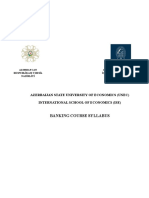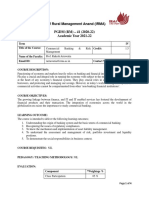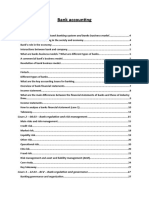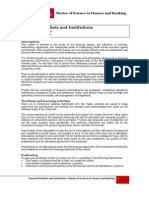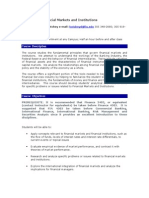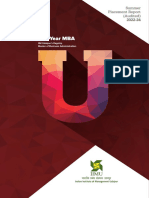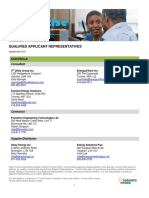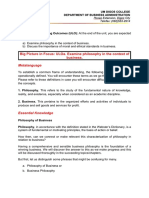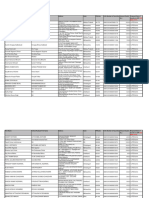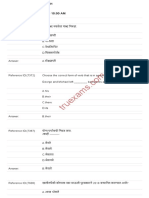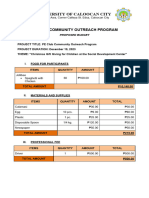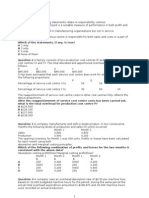Prof. Dr.
Axel Kind
Chair of Corporate Finance
Department of Economics
University of Konstanz
Spring/Summer 2023
Syllabus
(last update: 27.03.2023)
Bank Management
1 General Description
“Bank Management” is a Master-level course that describes and discusses the role, the
importance, and the activities of financial intermediaries in modern economies. Given
the extensive and further increasing regulation faced by banks, the course will consider
the existing institutional and regulatory framework of the modern financial system.
In general, the course focuses on the key role played by selected institutions, such as
banks, hedge funds, exchanges, and national and international regulators. The course will
deal with different sources of risk affecting the financial system. Particular attention will
be given to the concept, causes, measurement, and regulation of systemic risk embedded
in the financial sector. Finally, the course will review the development and the causes of
the Global Financial Crisis and discuss the regulatory responses in the US and Europe.
Ongoing developments related to the evolution of interest rates and the recent financial
troubles of banks, such as Credit Suisse (CS), Silicon Vallay Bank (SVB), and FTX, will
also be addressed.
2 Learning Goals
This course has three goals. First, it aims at providing students with an analytical and
structured mindset when addressing current challenges in the field of banking, financial
intermediation, and financial markets. In particular, students will get to know (i) what
banks are, (ii) what they do, (iii) why they exist, and (iv) how their role differs from that
of financial markets and other intermediaries. To achieve this goal, seminal papers in the
field of banking and financial-markets regulation will be presented and discussed. Second,
1
�the course will present state-of-the art tools to understand, measure, and manage a wide
range of risks, such as market risk, credit risk, liquidity risk, operational risk, as well as
adverse events, such as financial bubbles, short squeezes, and the recent phenomenon of
flash crashes. Third, the course aims at providing students with a sound institutional
knowledge of (regulatory) milestones in the history of banking and financial markets.
Students will become familiar with both the status-quo regulatory setting of the financial
system in the U.S. and Europe as well as prospective regulatory challenges.
3 Time & Place
The lectures are scheduled fortnightly on Fridays starting from 13:30 on the following
dates: 14.04.2023, 28.04.2023, 12.05.2023, 26.05.2023, 16.06.2023, and 30.06.2023. Each
date is dedicated to a course chapter. The lectures are accompanied by fortnightly tuto-
rials also held on Fridays and scheduled on the following dates: 05.05.2023, 19.05.2023,
02.06.2023, 23.06.2023, 07.07.2023.
The treatment of each chapter follows a clear predetermined structure. At least one week
before classes, a screencast will be uploaded on ILIAS to be watched at home. In class, I
will recap of the most important insights from the screencast and answer possible open
questions. Occasionally, a guest speaker from the banking industry will deliver a talk
and offer recent practical insights on a topic related to his/her position and professional
experience. Furthermore, at the end of class, I will offer a preview on the next chapter
(the screencast will be uploaded after class). Finally, just after class a set of questions
(with solutions) related to the current chapter will be uploaded on ILIAS. They should
be solved by students and will be discussed in the following tutorial, i.e., after one week.
The above mentioned structure will hold for all chapters of the course (with the exception
of the first one). On top of the tutorials, an ILIAS forum is available for the purpose of
discussing topics with fellow students and/or asking questions to the lecturer and the
teaching assistants. All information on the course will be provided on the ILIAS page of
the course.
4 Prerequisites
Students should have already taken introductory classes in the field of microeconomics,
macroeconomics, and finance. Students who attended the Bachelor-level course Regula-
2
�tion of Banks and Financial Markets are not entitled to obtain credits from this course
due to the similarity in the content of the two courses. The MA course Risk Management
(offered by the Chair of Finance) will deal with related topics. As both courses are not
mandatory for all students, a minimum overlap of concepts and topics is unavoidable
and, actually, desirable “repetita iuvant”).
5 Credits & Exam
Bank Management is a three-academic hour course (2+1). Six credits are awarded upon
successful completion of the course. The grading is based on a written exam. Exam dates
will be available on the homepage of the exam administration (department) in due time.
During the 90-minute exam students are allowed to use a non-programmable calculator
and one A4 cheat sheet, writable/printable on both sides.
Note: Questions (incl. emails) will only be answered until one week before the exam.
6 Outline of the Course
The following table provides a list of topics covered in the course.
Module Topic
1 Today’s Financial System
2 Why Do Banks Exist?
3 Market Risk in Banks
4 Credit Risk in Banks
5 Liquidity Risk in Banks
6 (Bank Regulation)
7 Readings & Literature
Reading materials (including slides) will be made available on ILIAS. There is no required
textbook for this course. However, interested students can refer to the following books
for a more detailed coverage of selected topics of the course:
• Understanding Financial Crises by F. Allen and D. Gale, Oxford University Press,
2009
3
� • Restoring Financial Stability - How to Repair a Failed System by V.V. Acharya
and M. Richardson, John Wiley& Sons, 2009
• Microeconomics of Banking by X. Freixas and J-C Rochet, MIT Press, second
edition, 2008
• Bankbetriebslehre by T. Hartmann-Wendels, A. Pfingsten, and M. Weber, Springer,
fifth edition, 2010
• Financial Institutions Management: A Risk Management Approach by A. Saunders
and M.M. Cornett, McGraw-Hill, sixth edition, 2008
• Risk Management and Financial Institutions by J.C. Hull, Wiley Finance, third
edition, 2012
• This Time is Different by C.M. Reinhart and K.S. Rogoff, Princeton University
Press, 2009
• Principles of Banking Regulation by K. Alexander, Cambridge University Press,
2019
8 Contact Information
Prof. Dr. Axel Kind Stephan Sontheimer
Chair of Corporate Finance Chair of Corporate Finance
Department of Economics Department of Economics
University of Konstanz University of Konstanz
Office F 242 Office F 241
Email: axel.kind@uni-konstanz.de Email: stephan.sontheimeri@uni-konstanz.de
LinkedIn: linkedin.com/in/axelkind






